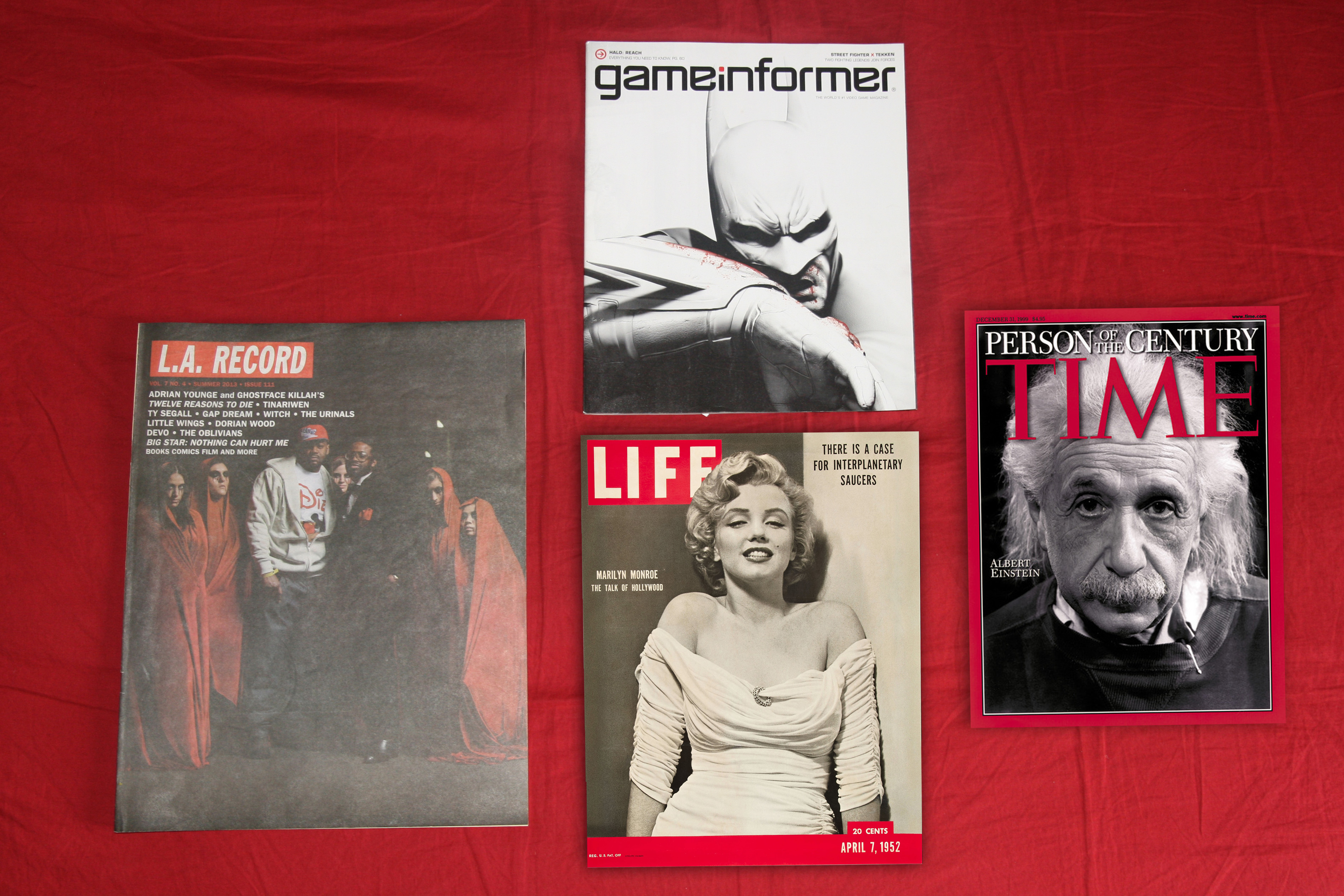Before you begin handling your magazine collection for storage preparation, always make sure your hands and skin are clean. This will help prevent the spread of dirt and oil onto the magazines covers and interior pages.
The terms ‘archival quality’ and ‘acid free’ are used to designate materials or products that are permanent, durable, and/or chemically stable and used for long-term preservation and conservation.
Magazines are common in many households, and are often stored as collectable items or out on display for casual reading and information gathering, like from a home decorating or cooking magazine. For magazines being stored away as collectables, the first step you should take is to acquire protective bags that your magazines can be stored in to help protect them from dust, dirt, and many other elements.
Bags
Unless your magazines are properly supervised over time with the occasional bag change, (due to yellowing or wear and tear) mylar sleeves are considered the best bag for storage purposes. Keep in mind, mylar can scratch and scuff easily if you handle your collection often, causing it to look slightly hazy. This won’t affect the protection of your magazines, but if they’re on display, you may want to change the bags every now and then, for better clarity.
For everyday use, ordinary bags work fine. Unless you’re using mylar though, you should plan on changing the bags every 7 years or so.
-
- Polyethylene – a soft, clear material thats able to breath and let moisture escape. It has some elasticity which allows for it to conform easier for a tighter fit. Has good contact clarity.
- Polypropylene – is a very clear, high sheen, crisp material. Often uses bi-oriented polypro, which stretches the material in both directions when being produced, so that it won’t wrinkle or warp over time. Less clarity.
- Mylar (Archival Polyester) – uses material of the highest clarity. Mylar will not discolor, damage, or adhere to items placed inside it. It is a sturdy material that displays beautifully, gives extra support to fragile items, and timelessly protects your collection.
Boards
Backing boards are important for support and will prevent spine stress and corner/edge wear. Magazines should be kept on the coated/glossy side of the board, if both sides aren’t already acid-free. The rough side will create a tan image on the back cover over time. For longer term storage, look for boards that have a buffer throughout. Unless you’re using virgin, alkali-buffered backer boards, you should plan on changing the boards every 7 years or so.
-
- Chipboards – are pH neutral, contain acid, and are .030 point in thickness. White on one side. For short term storage.
- Standard Acid-Free Boards – are acid-free all the way through, and .028 in thickness. White on both sides. For intermediate to long-term storage.
- Super Acid-Free Boards – are acid-free, lignin-free, and contaminant-free with alkaline 8.0-9.0. Typically .040 point in thickness. Off-white, 100% alpha cellulose, buffered with calcium carbonate on both sides. Meets Library of Congress Archival Standards for long-term to indefinite storage.
Archival/Micro Chamber Paper
Archival Paper is a very thin paper that is placed inside the front and back cover to help remove and neutralize acids, pollutants and by-products of deterioration. It is nearly transparent, interleaving paper that contains dispersed molecular traps that stop acid migration from the interior pages to the covers. It helps eliminate yellowing that can occur, as well as odors such as smoke, mold and mildew. Insert one or two sheets to help conserve your collection.
Magazine Size Examples
Standard Size
-
-
- 8 ⅜” x 10 ⅞”
-
Digest Size
-
-
- 5 ⅜” x 8 ⅜”
-
People Magazine / Entertainment Weekly / Money Magazine / Fortune Magazine
-
-
- 7 ⅞” x 10 7⁄16” Final Trim Size
-
Discover Magazine / Scientific American Magazine
-
-
- 8” x 10 ½” Final Trim Size
-
Martha Stewart Living
-
-
- 9” x 10 13⁄16” Final Trim Size
-
Print Magazine
-
-
- 8 ⅞” x 12” Final Trim Size
-
Sports Illustrated
-
-
- 8″ x 10 ½”
-
Rolling Stone Magazine / WIRED / GQ / Traveler / Bon Appétit / Vogue
-
-
- 8” x 10 ⅞” Final Trim Size
-
Nylon Magazine
-
-
- 9” x 10 ¾” Final Trim Size
-
Architectural Digest
-
-
- 8 ⅜” x 10 ⅞” Final Trim Size
-
Life
-
-
- 10 ½” x 14″
-
